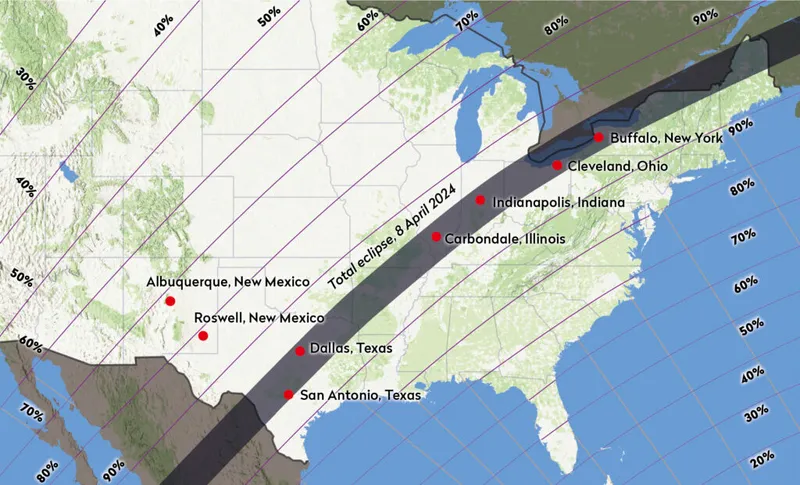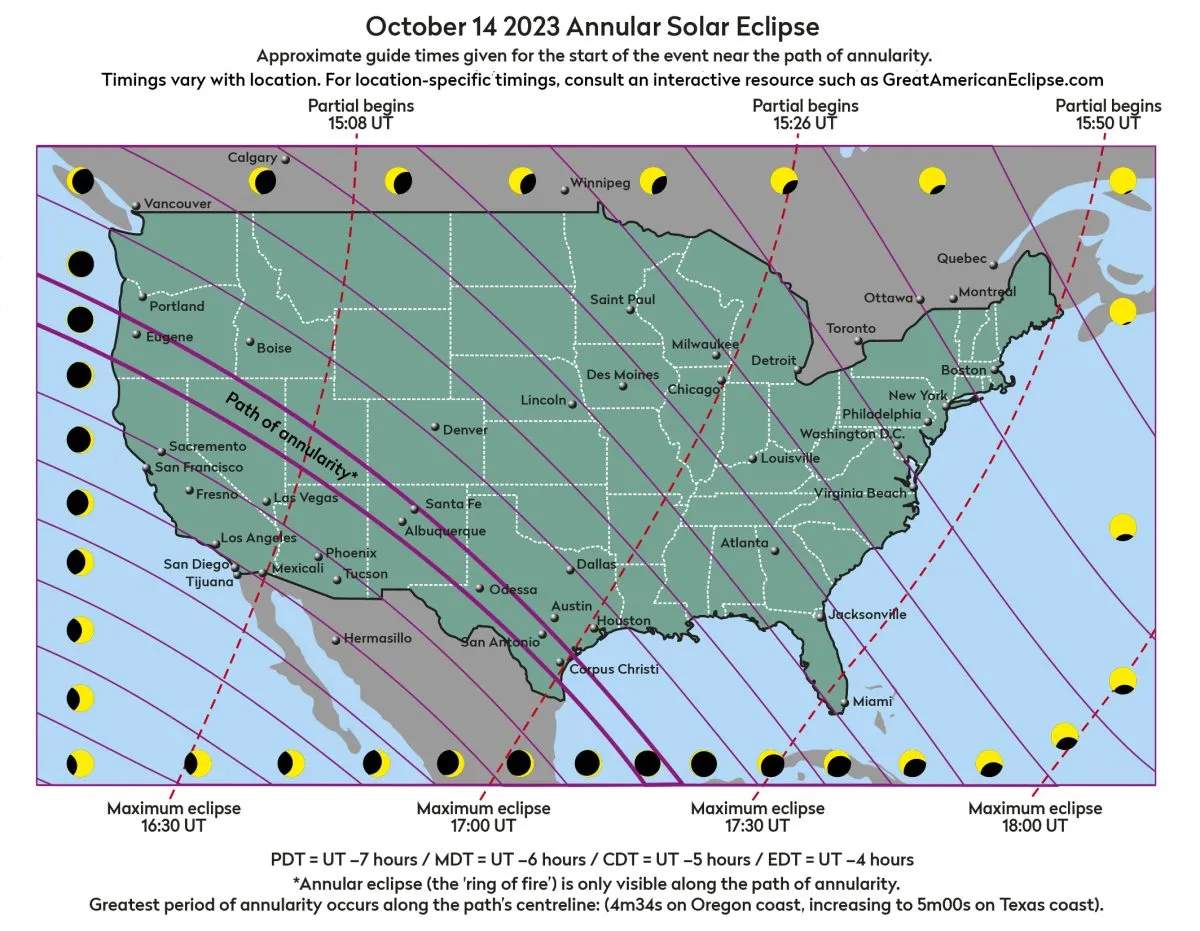Eclipses are one of nature’s most mesmerising spectacles and observers in the US are being treated to two spectacular eclipses within a few months.
Eclipse-chasers are often willing to fly half-way around the world to remote, hard-to-reach locations just for the chance to see the phenomenon.
The past half-year has marked a unique opportunity as not just one but two eclipses will have crossed one another over North America.
On October 14 2023, a ‘ring of fire’ annular solar eclipse passed across 10 countries, with a long section of the path running straight through the USA.
And on April 8 a total solar eclipse will be seen across Mexico, the USA and Canada.
Find out when the next eclipse is taking place

The October 14 annular eclipse was a warm-up to the second event 177 days later on 8 April 2024, when a total solar eclipse will pass across the USA, Mexico and Canada, with an estimated 32 million people living inside the path of totality.
There’s even a region in Texas – including much of San Antonio – that will see both.
This pair of eclipses is the most accessible in decades.
Total solar eclipse, April 8 2024

This total solar eclipse is being called the Great North American Eclipse and is expected to be one of the most-viewed eclipses in recent history.
The path of totality will be around 190km wide, with a maximum duration of 4 minutes and 28 seconds visible in Durango, Mexico.
Totality will be seen first in Mazatlán on the Pacific coast at 11:09 MST (17:09 UT), crossing into the US in Texas at 13:27 CDT (18:27 UT), moving up through the country, eventually crossing into Canada.
The Moon’s central shadow will leave land at South Bird Island, Newfoundland at 17:13 NDT (19:43 UT).
The closer you stand to the centre of the path of totality the longer you’ll be able to see totality.
But you’ll also want to consider the weather, and sites further southwest have a better chance of clear skies, with Mexico having the clearest skies for the time of year.
Read our complete guide to the April 8 total solar eclipse.
October 14 2023 annular solar eclipse

The Moon’s elliptical orbit means sometimes it blocks all but the outer edge of the Sun, leaving an annulus (ring) of light: an annular solar eclipse.
During October’s eclipse, the Moon covered almost 91% of the Sun for up to 5 minutes and 17 seconds.
The path of annularity, where observers would see the ‘ring of fire’, touched land in Oregon at 09:13 PDT (16:13 UT) moving southwest until leaving Texas at 12:03 CDT (17:03 UT), before passing over Mexico, Belize, Guatemala, Honduras, Nicaragua, Costa Rica, Panama, Colombia and Brazil, where it ended at 16:48 BRT (19:48 UT).
The path of annularity was up to 225km wide and the longest eclipse was off the coast of Nicaragua in the Gulf of Mexico.
Read our complete guide to the October 14 annular solar eclipse
Getting the best view
The eclipses will be visible anywhere in their paths of totality or annularity, but there are many iconic sites you might want to visit.
The map below shows a selection of parks and cities in the paths (including Roswell, home of the famous Roswell UFO incident, New Mexico and Carbondale, lllinois, which also saw the 2017 eclipse).
You can see the paths of both eclipses in our map below. Red dots are cities along the eclipse paths; green triangles are national and state parks.

Are you travelling to see or photograph either US eclipse? Let us know by emailing contactus@skyatnightmagazine.com.
